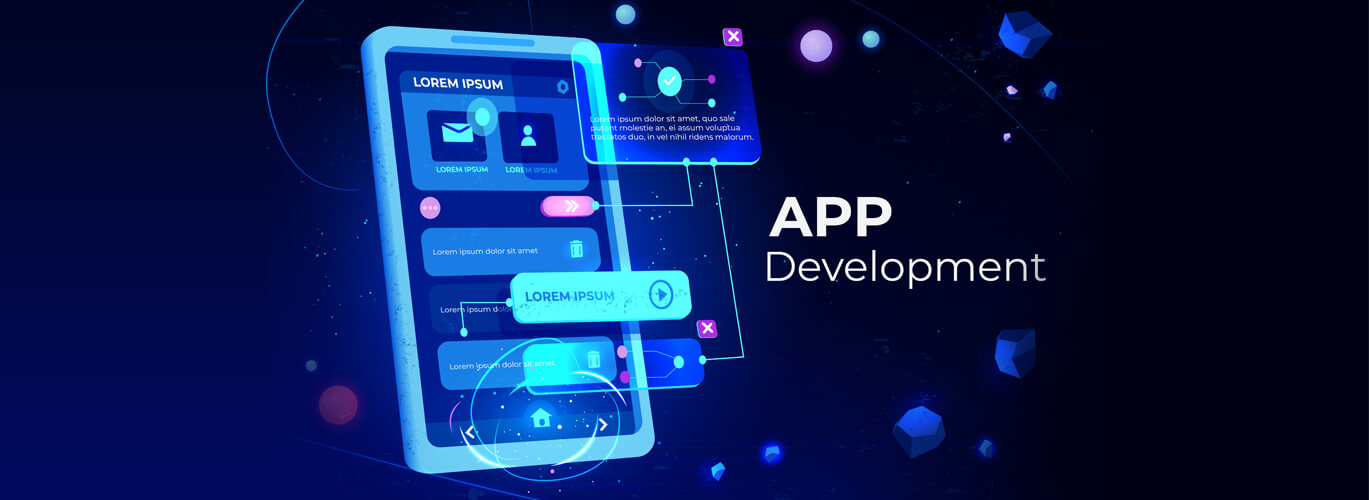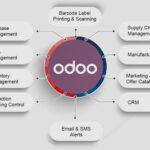Mobile applications support users to do tasks more efficiently and conveniently, like purchasing something online, booking a flight, ordering meals, or paying bills; everything is just a click away.
Mobile apps development companies have become a requirement for businesses to move forward in the market. Mobile app development services support the companies in raising brand recognition, enhance consumer engagement, encourage revenue development, and much more.
Mobile App Development Process
Mobile app development is always a daunting process and it is. The whole app development process is aggravating and time-consuming. However, we will provide you with a thorough understanding of the integrated mobile app development cycle.
There are many steps to develop an app, a step-by-step approach that enables you to assemble a mobile app quickly. Given below are some of the critical steps to follow:
Step 1: Planning
The planning phase is the first step in developing the mobile application. The reason for making the app, the intended audience, and other features are examined while determining the app’s purpose. These ideas will help you in building the perfect app and your users will surely like app development.
Developing an app with an aim is better than having an app without a goal. It’s easy to find the trending app development. The planning state exhibits the factors you should add to develop an attractive mobile app.
Step 2: Designing
The second step of the mobile app development lifecycle is the designing phase. Focus on the two important aspects of the application during this phase. This includes the user interface (UI) application and its utilities. An App UI aims on what people see in your app. This will help you build a great app that as a whole captivates people with pixels, graphics, etc.
The mobile app functionality is the second thing that a developer needs to consider. This element focuses on how this app works and what its users can do with it. This roadmap will support you to stay on track and handle your work suitably. This gives you an idea of what factors you require to include to remain competitive on various mobile app platforms.
Step 3: Prototyping
The mobile application development phase provides a visual representation of your future mobile application. Prototyping is one among the most important parts of your app development. This helps correct misunderstandings to develop an excellent app. Prototypes are just making your idea into a practical model. And it also conveys how your idea works.
This step also includes various parts like developing wireframes, sketching your app, clickable prototypes, and creating app skins. These activities will give you an exact picture of what your application will look- like.
Step 4: Development
This is the most tiring task. So this is also divided into two phases, front-end and back-end, including APIs. Front-end development consists of designing screens for the various mobile layouts, and the aim is to develop an app that works smoothly on different devices.
The back-end development process consists of the API layer with fetching, data storage, logic, etc. The application connects to the server to collect data and information in this mobile application development cycle.
Step 5: Beware of your Quality
Product quality assurance is one among the important phase for any company before release. This step is also one of the pivotal steps as well in developing mobile applications. So, you will understand whether your mobile application works well on various platforms and screens through this step.
You will need various tests to ensure your app is made perfectly. There are particular tests like performance testing, Interface testing, security testing, etc. This secure customer information.
Step 6: Get Ready for Launch
This is the final stage of the mobile app development cycle, where you need to ensure that your app works and meets the requirements of its customers. Before launching your app, it is your duty to follow the guidelines proposed by different platforms like Google Play Store and App Store.
Each platform has particular rules that must be considered. This makes the publication approve with no problem. You will have to run some kind of- marketing campaign. After that, release your app to ensure the success of the app.
Step 7: Maintenance
After launch, support your app by enhancing its functionality. You will need ongoing infrastructure support to maintain your application. You can do it with the help of cloud service and the administration panel. They ensure your career runs pleasantly.
Conclusion
The mobile application development process is a constant one that will continue after the first launch as you gain user feedback and add new features.
Pinetech IT Solutions is a leading mobile app development company in Kerala that delivers best mobile app solutions for different platforms using the most advanced technologies and unique mobility methods.






